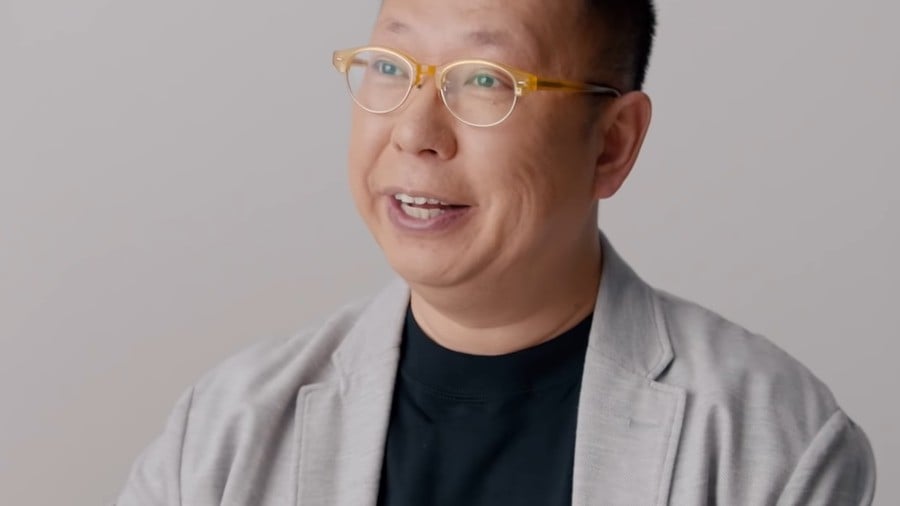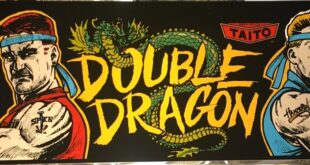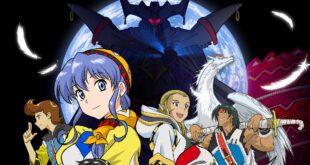Boo is one of Mario’s most beloved enemies, the little ghost that covers its face when you look at it but balloons into something terrifying when you turn your back. Generations of players have laughed and cursed at its strange behavior, but few casual fans know the story of where it came from. Boo wasn’t just pulled out of a sketchbook. It was inspired directly by a real woman: Takashi Tezuka’s wife.
That’s right. The shy-then-furious personality of Boo came from a moment of marital frustration. Tezuka, one of Nintendo’s key designers, was working long hours during the late eighties. Like many young men wrapped up in their careers, he poured himself into the job. And like many wives in history, his spouse grew tired of being ignored. According to Shigeru Miyamoto, she was normally reserved, but one evening she snapped and unloaded her anger on Tezuka. Instead of brushing it off, he carried the memory into the office, and it blossomed into one of gaming’s most iconic ghosts. Nintendo Life’s retrospective puts it bluntly: Boo is based on Tezuka’s wife losing her temper.
Looking back, there is something very nostalgic about remembering when you first discovered that Boo only moved when you turned away. Kids on playgrounds whispered about it like it was a secret trick, even though it was just core design. Many of us learned that lesson the hard way, with Boo rushing us from behind. For a generation raised on Nintendo Power and hushed after-school rumors, Boo was one of the first enemies that felt alive, as if it had moods.
From Domestic Spats to Gaming Legend
What makes Boo’s backstory so much fun is that it is not just corporate polish. It is messy, human, and relatable. Every gamer who has ever argued with a partner about spending too much time on a console can laugh at the idea that one of Mario’s most iconic enemies is basically a digital spouse turned into pixel form. The notion that Tezuka took a personal scolding at home and channeled it into a mechanic that millions of kids would play against for decades is both hilarious and oddly touching.
In Japan, Boo’s name is even more on the nose. The ghost is called Teresa (テレサ), which comes from the verb tereru, meaning to be shy or bashful. That detail is not just wordplay; it cements the idea that Boo’s design is rooted in emotion. This was not just another monster sprite thrown onto the screen. Boo reflected real feelings, real moods, and a personality you could sense immediately. The combination of the bashful Japanese name and the real-life wife inspiration is what makes Boo feel richer than your average side-scrolling obstacle.
There is also a cultural element at play. Boo’s shrinking-and-expanding behavior fits with traditional Japanese folklore about spirits called hitodama, ethereal flames that change or vanish depending on whether they are observed. Nintendo often pulled from folklore and domestic quirks alike, and Boo is a perfect example of that alchemy. It is design as storytelling, where a simple behavioral rule becomes a ghost with depth. That is why Boo has endured so long, and why it keeps appearing in game after game.

A Ghost With More Personality Than Pixels
The beauty of Boo’s origin is how little it needed to work. The NES did not allow for sweeping, nuanced enemies. Designers had to squeeze character into a few frames of animation. Tezuka’s wife gave him the perfect model: an enemy that shifts instantly depending on context. That dynamic… timid if confronted, furious if ignored, fit neatly into the hardware limitations. No need for elaborate movement routines. Just freeze or attack, shy or angry.
That simplicity is part of why Boo has endured. From its debut in Super Mario Bros. 3 to endless appearances in later games, Boo has never really changed. Its behavior is so efficient and so recognizable that Nintendo has been able to reuse it endlessly without wearing it out. And at the heart of it all, hidden behind decades of level design, is one woman in Kyoto who had finally had enough of her husband’s long hours.
It is funny to imagine her reaction when she learned the truth. Did she laugh? Did she roll her eyes? Did she scold him again for making her temper a joke for the whole world to play with? Interviews suggest Tezuka laughed about it years later, and Miyamoto retold the story with obvious amusement. The inspiration may have been a moment of tension, but the result was affectionate. In a way, Boo is not mocking his wife so much as honoring her. Without her flare of anger, Mario’s haunted houses might have been far less memorable.
Boo’s Legacy in the Mario Universe
Over the decades, Boo has only grown in stature. From spin-offs like Mario Party to kart racing in Mario Kart 64, Boo has become more of a mischievous mascot than a simple enemy. The mechanic of shrinking when stared at has stayed constant, but the personality has expanded. Boos laugh, smirk, and even blush. Nintendo leaned into the humor of their creation, making Boo a face of Mario’s rogues’ gallery alongside Bowser and Goombas.
Part of that legacy is built on the origin story itself. Fans repeat it in forums, in trivia books, and in retrospectives because it connects something universal to something playful. We all know what it feels like to get yelled at when we deserve it, to deal with moods that shift based on where the attention is. Boo is a video game manifestation of that dance, and it is why the little ghost is instantly recognizable even to casual players.
What started as a private joke in a Nintendo office has become a piece of pop culture. Boo is on T-shirts, plush toys, and Halloween costumes. Every time Nintendo builds a haunted house stage, fans know to expect Boos lurking, ready to laugh the moment you look away. And somewhere in that laughter, Tezuka’s wife is still there, immortalized as the ghost that scolds Mario whenever he turns his back.
Bo0o0oo0!
Boo is more than a ghost. Boo is a wife’s frustration turned into code, a domestic squabble reframed as brilliant game design. That mix of bashfulness and rage makes the character instantly relatable, because it is drawn from something real. While fans still talk about power-ups and speedruns, the true genius of Boo lies in its origin. It reminds us that games are not born in a vacuum. They are shaped by marriages, late nights, and the kind of everyday arguments that echo far beyond the living room.
So the next time you watch Boo hide when you look at it, remember the wife who inspired it. Somewhere in that shy grin and sudden outburst lives a universal truth about relationships. Ignore her too long, and she will haunt you.
Ready for another fun fact to ruin your childhood? Mario was ALWAYS punching Yoshi in the back of the head!
 Retro Replay Retro Replay gaming reviews, news, emulation, geek stuff and more!
Retro Replay Retro Replay gaming reviews, news, emulation, geek stuff and more!





